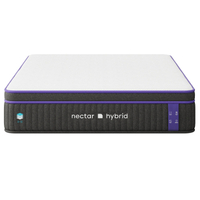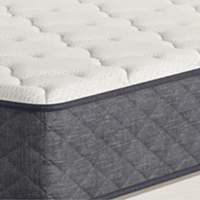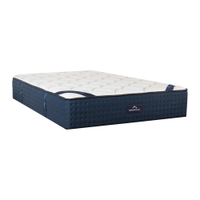Hybrid vs innerspring mattress: Key differences explored
Hybrid and spring mattresses are great for firm, responsive support, but which is better?

Hybrid mattresses are more popular than ever and have gained a reputation for being better than other types of beds — including the classic innerspring mattress. While there are a lot of key differences between hybrid mattresses vs innerspring mattresses, do these differences actually mean that a hybrid bed is better for your sleep?
While most of our picks for the best mattress of 2025 are hybrid mattresses, there are a lot of good quality innerspring beds that offer that traditional, bouncy feel for a low price. If you're choosing between a hybrid or an innerspring mattress, we're here to help you decide.
In this hybrid vs innerspring comparison guide, we'll take a look at both types of mattresses and compare the pros and cons of each. We'll also delve into the usual prices of these mattresses, and how you can pick the best bed for your budget in this month's mattress sales.
Hybrid vs innerspring mattresses: An overview
Hybrid mattresses are a fairly recent invention, having been introduced to the public back in 2008. Innerspring mattresses, on the other hand, have been around since the 19th Century, and they're the ever-present, classic type of mattress that you've likely slept on in your lifetime.
Innerspring mattresses (sometimes simply known as spring mattresses) have that traditional, springy feel that we often associate with beds. An innerspring mattress's construction usually consists of a steel coil support base with a padded outer layer for comfort.
Hybrid mattresses also contain a steel coil support system, but these coils are encased in fabric, so they're often called pocket springs (however, some of the best hybrid mattresses use innerspring coil systems where the coils are unwrapped). In addition to the coil support system, you'll also find layers of foam (usually memory foam or latex foam) for comfort and support, and to act as a transition layer between the mattress's top layers and the tier of coils.
Hybrid vs innerspring mattresses: key differences
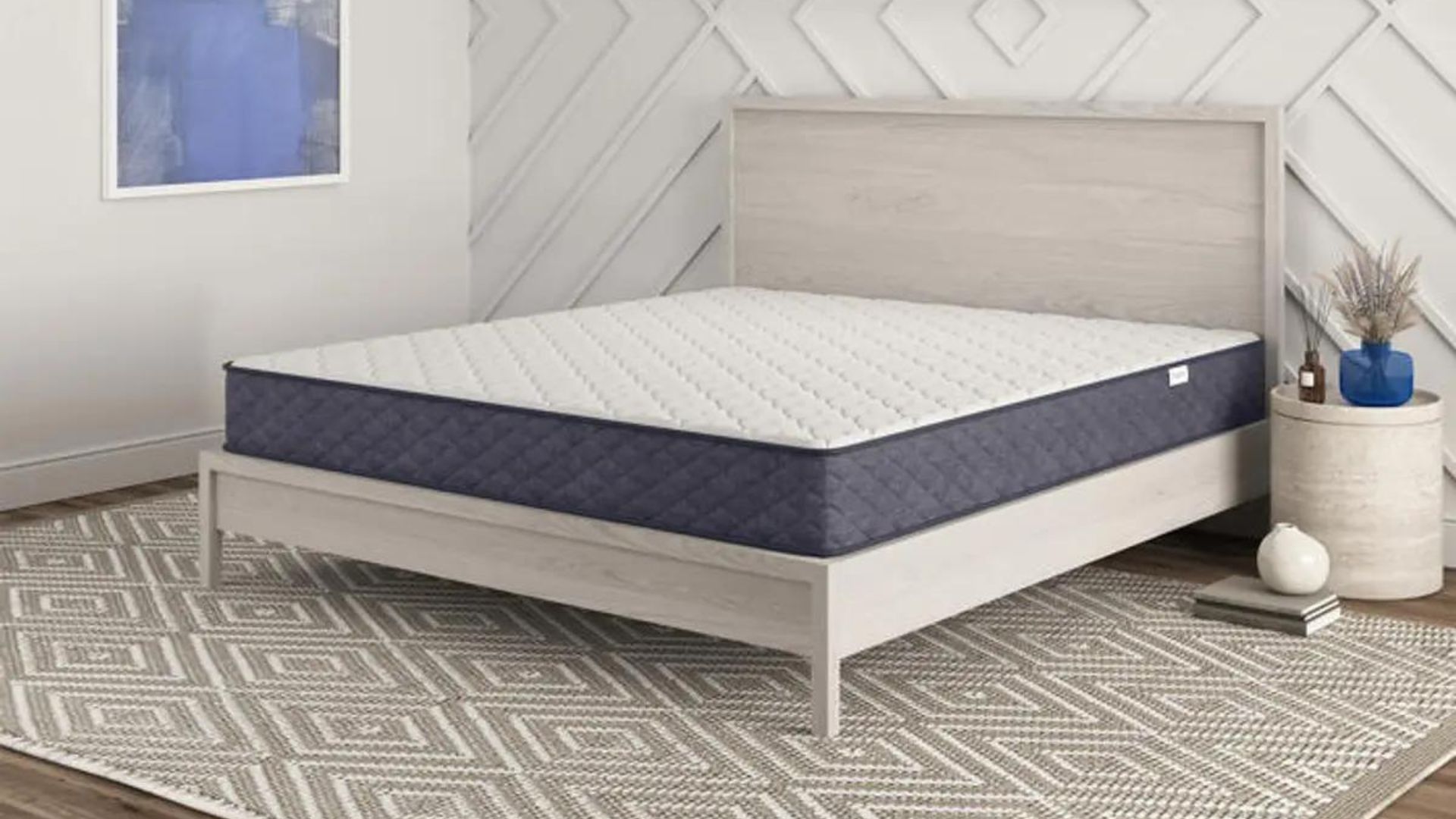
Hybrid mattresses are a diverse group, as design, materials, and types of foam and coils can vary from mattress to mattress. The most common foam used is memory foam for sink-in soft comfort. Foam layers are often used to provide comfort, support, or stability depending on what type of foam is used in each tier. The addition of foam means that hybrids can provide the pressure relief and plushness of a memory foam bed while adding the support and airflow of a spring mattress.
While the coil layer encourages breathability and some of the best cooling mattresses are hybrids, that doesn't mean that all hybrids sleep cool. The addition of memory foam, which absorbs body heat, can sometimes mean that hybrids sleep warm. A lot of hybrids infuse their memory foam with gel or copper, but we've found that this is ineffective against heatwaves, night sweats, and overheating. That said, hybrid beds that use latex foam instead of memory foam can utilise the latex's natural breathability for a cooler sleep. The best organic mattresses are usually latex hybrids and, as they combine the breathability of coils and latex, sleep incredibly cool.
Innersprings, on the other hand, are very breathable as the coil system encourages ventilation isn't tempered by layers of foam. However, the lack of foam layers for comfort can mean there's not enough of the sink-in softness that foam offers. Side sleepers may find that spring mattresses don't offer the body-contouring relief needed to cushion and soothe pressure points along the shoulders, hips, and knees.
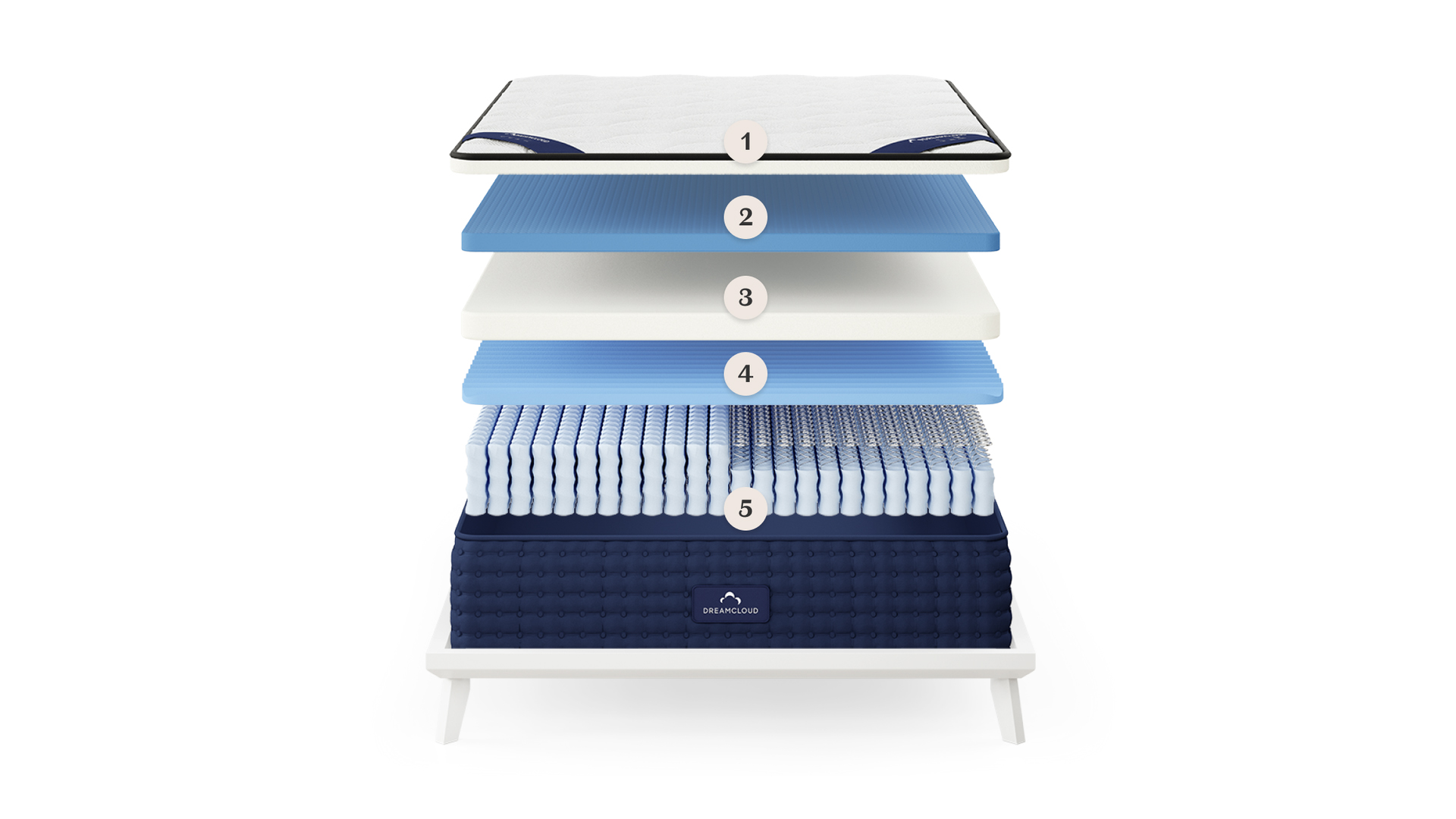
On the flip side, those who need sturdy support, such as stomach sleepers, will feel their weight is evenly distributed and spine is well aligned thanks to firmer feel. The supportive coil system also means there's better edge support, so it's much easier to sit down on or get up from the edge of the bed. The springy feel is also traditional and familiar, so those who aren't used to memory foam may find it easier to adjust to a new innerspring mattress.
The lack of sink-in softness is also a plus for combination or restless sleepers, as the surface is responsive and bouncy enough to easily change positions. However, its buoyancy means that innersprings are notorious for their motion transfer. While hybrids' pocketed springs and slow-moving memory foam can provide some excellent motion isolation, you're more likely to feel a restless partner's movements with the bouncy innerspring.
Spring mattresses are also less durable, and the coils can wear out quickly and cause some annoying creaks and sagging. Meanwhile, hybrids are more durable, especially if using long-lasting latex foam for comfort and support.
Hybrid vs innerspring mattresses: BRANDS AND PRICES

Some of the best luxury mattresses are hybrids, but you can also get hybrid mattresses at affordable prices. While a lot of hybrid mattresses are more expensive than all-foam beds, with many in the mid to upper-mid range price bracket, some of the best cheap mattresses are hybrids and sit in the budget price range. Almost all of the major mattress brands produce hybrids, include Nectar, DreamCloud, Nolah, and Saatva.
However, if you're looking for an organic latex hybrid from top-rated eco brands such as Avocado and Birch, then you're looking at a hybrid mattress in the premium price bracket. However, some eco mattress brands, such as Awara, offer mid-range organic hybrids.
Innersprings, on the other hand, tend to be much more affordable as they don't have as many features and layers as hybrids. Innerspring mattresses are staring to fall out of vogue, but they are still prevalent and found in the budget to mid-range price tier. They're often sold by a lot of high-profile retailers such as Mattress Firm and mattress brands such as Sealy.
Hybrid vs innerspring mattresses: pros and cons
The pros of a hybrid mattress:
They can provide cushioning pressure relief: Hybrid mattresses usually contain comfort layers of foam (usually the ultra-soft memory foam) and are often fitted with a plush pillow top for extra cushioning.
They're diverse: Hybrid mattress come with many different designs, price tags, and materials, so there are plenty of hybrid beds to choose from that will suit your needs.
They have lower motion transfer: Lots of hybrid beds are fitted with movement-absorbing memory foam and pocketed, encased springs that can boost motion isolation.
The cons of a hybrid mattress:
They can sleep warm: The downside of the plushness of memory foam and pillow tops is their tendency to trap heat, which sometimes even the air-circulating layer of coils can't offset.
They can be expensive: Hybrid beds usually sit in the upper-mid range price tier, and move up to the premium price bracket when high-quality materials (such as latex) or built-in cooling tech is added to the mix.
They can lack edge support: Memory foam is notorious for making some people dip into the surface and even feel trapped.
The pros of an innerspring mattress:
They're inexpensive: Innersprings are one of the most traditional, prevalent types of mattresses out there, and so are much more accessible and affordable.
They're responsive and supportive: Innersprings have that classic, bouncy bed feel, which is great for combination sleepers, and a firm, supportive coil system.
They're breathable: The layer of coils increase airflow and create a breathable, cool sleep surface.
The cons of an innerspring mattress:
They wear out easily: Springs can wear out easily, causing an annoying creaking sound and reducing the lifespan of an innerspring to 6-8 years.
They can be too firm: While the coil system adds a lot of support, the lack of comforting foam layers mean innersprings aren't the best for providing cushioning pressure relief or plushness.
They have high motion transfer: The downside of an innerspring bed's responsiveness is its lack of motion isolation, meaning your likely to feel (and hear) a restless partner's tossing and turning.
Hybrid vs innerspring mattresses: which should you buy?
Buy a hybrid mattress if...
✅ You share a bed: A lot of hybrid beds today have pocket coils (coils that are encased in fabric) and slow-moving memory foam layers, which boost motion isolation.
✅ You're a side sleeper: Look out for hybrid mattresses with a medium or a medium firm rating (anywhere between 4-7), as these can provide a sleep surface that cushions your knees, hips, and shoulders.
✅ You want a durable, high-quality bed: Depending on the type, hybrid mattress can last 8 to 10 years, while latex hybrids can last for a lot longer than a decade. They also boast more features, such a comforting foam layers and even built-in cooling tech.
Buy an innerspring mattress if...
✅ You're on a tight budget: Innerspring beds are some of the most affordable mattresses on the market thanks to their simple design.
✅ You need support: An innerspring bed's coil base provides sturdy support to keep stomach sleepers' spinal alignment healthy and prevent lower back pain. The strong edge support is also great for those who want to get up and into bed more easily.
✅ You sleep hot: As the core of the innerspring beds is a ventilating coil system, these beds are extra breathable.
TOP hybrid and innerspring MATTRESSES ON SALE NOW
Nectar Premier Hybrid Mattress: from $1,349 $799 at Nectar Sleep
Our Nectar Premier Hybrid mattress review found this mattress to be supportive yet cushioning and isolates movement well. Currently there's a Nectar mattress sale that takes off 40%, so you can pick up a queen size for $1,099, saving you $700.
Sleepy's Rest Firm 2.0 Innerspring Mattress: from $479.99 $319.99 at Mattress Firm
Designed for back and stomach sleepers, the Rest Firm 2.0 is a classic innerspring that offers sturdy support and even weight distribution through its interlocking coil system. Its soft stretch knit cover also adds comfort and extra breathability. Right now, there's up to 355 off a queen size at Mattress Firm, taking it down to $449.99 from $699.99.
DreamCloud Hybrid Mattress: from $839 $419 at DreamCloud Sleep
Our DreamCloud Hybrid mattress review praised the luxurious feel and great value of this luxury hybrid. Currently, you can get up to 50% off the DreamCloud Mattress, with a queen reduced from $1,332 to $665. DreamCloud's evergreen mattress deal has always been 40% off, so this is the best DreamCloud mattress deal we've seen.
Sign up to get the BEST of Tom's Guide direct to your inbox.
Get instant access to breaking news, the hottest reviews, great deals and helpful tips.

Frances Daniels is a PPA-accredited journalist and Sleep Staff Writer at Tom's Guide with an MA in Magazine Journalism from Cardiff University. Her role includes covering mattress and sleep news and writing sleep product reviews and buyer's guides, including our Best Hybrid Mattress 2025 guide. She is hugely interested in the relationship between good sleep and overall health, interviewing a wide array of mattress and sleep experts to create well-informed articles about important topics such as nutrition, sleep disorders (from sleep apnea to night terrors), lucid dreaming, sleep hygiene, and mattress care. She is also our specialist on mattress toppers — producing mattress topper reviews and taking care of our Best Mattress Toppers 2025 guide — and takes the lead on all content related to fiberglass-free mattresses for a clean, non-toxic sleep. Outside of Tom's Guide, she has written for Ideal Home, Homes & Gardens, and Marie Claire.
